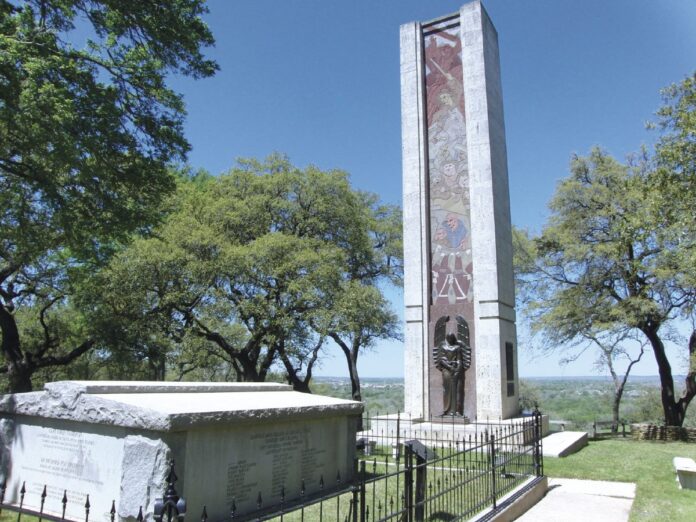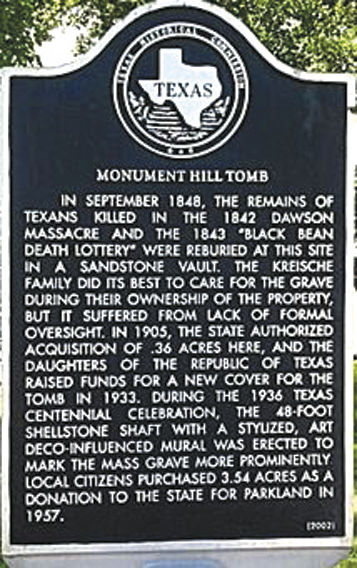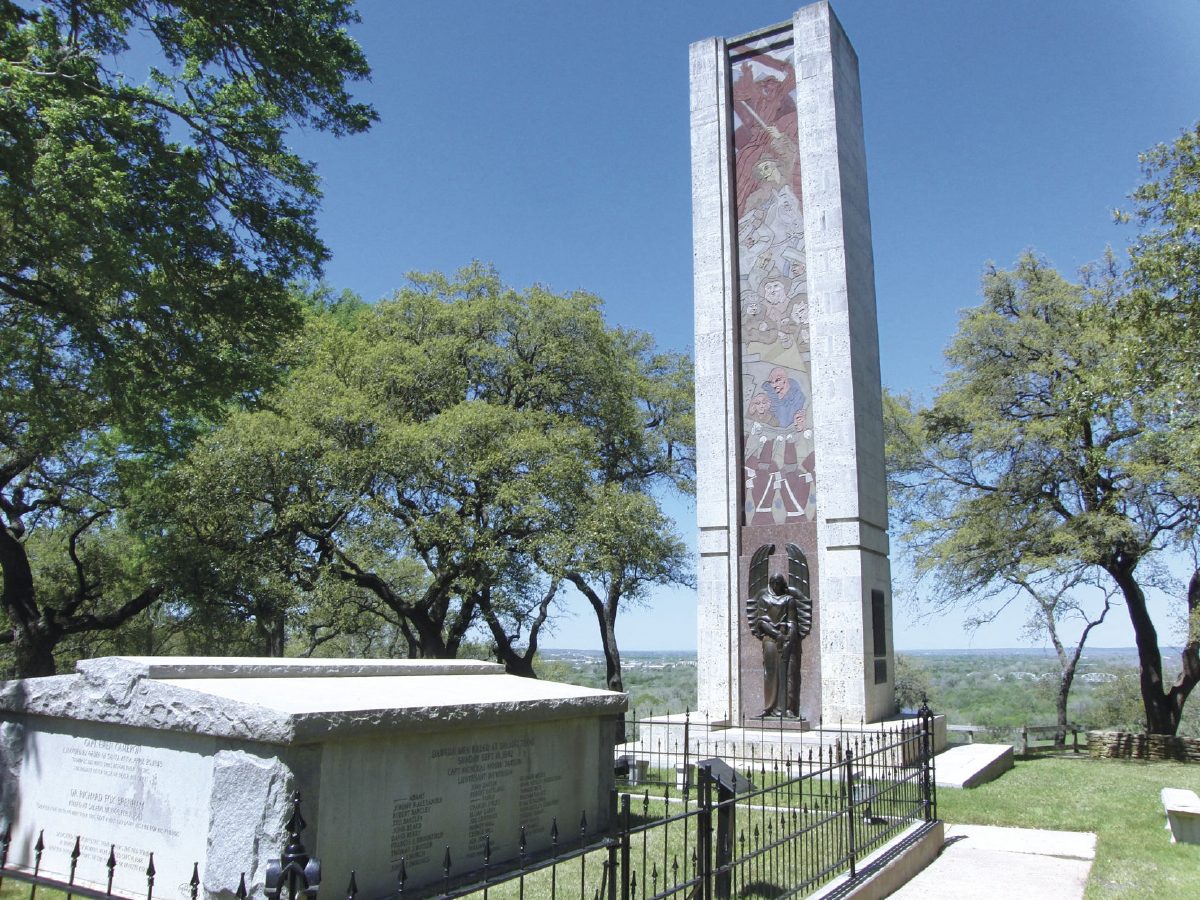BY NORMAN ROZEFF
The two divisions of Texans were reunited at Saltillo and by February 10, 1843, and then went on to Rancho El Salado. This placed them about 200 miles from the Texas border.
At the ranch the prisoners, at the urging of Cameron, formulated an escape plan. While Fisher opposed it, General Green and other officers supported the plan to overwhelm the guards. Cameron was selected to give the signal for the outbreak by yelling, “Now, boys we go to it.”
The action of the Texans on February 11, 1843, succeeded and they were soon in the possession of 160 muskets, and carbines, three mule teams of ammunition together with 100 horses and mules. However, there was a price to pay for their success. Doctor Brennan, Patrick Lyons, and Captain Fitzgerald were killed outright and John Heggerson died soon after of his wounds.
Others who sustained wounds were Captain J. R. Baker, together with privates Stansbury, Hancock, Trehern, and Harvey. The captors sustained a number killed and badly wounded.
The escapees headed north through some very rugged country. They had lost the sympathetic Mexican guides who they planned on to assist them. Confusion reigned. The lack of water then confronted the now scattered band as they entered mountainous terrain. Some went on to kill and eat the horses and mules which they had stolen. After a period of a week, the escapees, either singly or in small bands, were recaptured by pursuing Mexican troops that had been sent in pursuit. There were only three Texans who made it back to the border.
The dictator president, Antonio López de Santa Anna upon learning of the escape ordered any of those recaptured to be put to death. “Governor Francisco Mexía of the state of Coahuila refused to obey the order, and the foreign ministers in Mexico were able to get the decree modified. The government then ordered that every tenth man be executed.” This meant that some of the 173 survivors would face execution. Colonel Domingo Huerta in charge of the “Red Caps” was the officer in command. 159 white beans were place in a jug with 17 black beans on the top.
The jug was then thoroughly shaken to mix the contents. Reportedly an unusual incident preceded the shaking. Captain Cameron was ordered to draw first as the Mexicans wished him killed first. Cameron came forward and is said to have spoken these words “Well boys, we have to draw, let’s be to it.” Apparently digging deep into the jug he drew a white bean and remarked to Tom Green “Boy this beats raffling all to hell; this is the tallest gambling scrape I ever was in. Boy I told you so. I never failed to draw a prize.” ( Another account in Wikipedia relates that the first Texan to draw a black bean was Major James Decatur Cocke. “A witness recalled that Cocke held up the bean between his forefinger and thumb, and with a smile of contempt, said, “ Boys, I told you so; I never failed in my life to draw a prize.”
He later told a fellow Texan, “They only rob me of forty years.” Fearing that the Mexicans would strip his body after he was dead, he removed his pants and gave them to a companion whose clothing was in worse shape. He was shot with the sixteen others who drew black beans on March 25, 1843. His last words were reported to have been, “Tell my friends I die with grace.”) The others prisoners then drew a bean. After the last of the 17 black beans was drawn the intended victims were unchained from the partner with whom they had been bound. They were then bound, blind-folded, and shot in the back. Cameron had begged the Mexicans to shoot him and spare his men but to no avail. He reflected on the fortunes of fate, for the escapees could have utilized the main road as it was later learned that the Mexican troops had been marching to Guererro before being informed of the escape and turning back.
When Santa Anna learned that Cameron was not among the men executed, he expressed disappointment and ordered him shot. It was on April 25, the day before the prisoners reached Mexico City, that
Cameron was executed. He had spent the night before chained with his fellow companions. Alf Thurman, who served with Cameron in General Green’s brigade, would later relate the story. He commented on Cameron’s great physical strength and noted that Cameron’s wrists were so large and powerful that he could have slipped of his handcuffs at will. Cameron related about his business dealings under the Mexican Colonization Laws and how he was entitled as an “Empresario” to a large tract of land.
Perhaps sensing that his days were short, Cameron, who was unmarried, requested of Thurman contact his relatives in Scotland to let them know his sacrifices were not in vain. As the hour approached for his execution, he knelt in deep prayer. Near the end of his time on earth Cameron said to Thurman “Alf, I could slip these handcuffs, snatch a gun from a guard when they take me out, and brain three or four before they could kill me, but it would make it hard with the rest of you, and I’ll just let them shoot me.” He then went to this death without a struggle. His companions all heard the gun shot and considered it an object lesson from their captors.
As Cameron County was the site of the first battle of the Mexican-American War, its leaders felt that it was appropriate to name the county in an earlier hero’s honor. A bronze tablet was placed on the 1882 courthouse. It read “Lest we forget, This Tribute to Captain Ewen Cameron, For Whom This County is named, is placed here. Born in the Highlands of Scotland in 1811, He was killed in Mexico on April 25, 1843, a soldier of the Republic of Texas. he died with his face to the Foe.”
The surviving prisoners were marched to Mexico City. At first they were put to road work and later imprisoned in the Perote Prison in the state of Veracruz. Some of them escaped while others died there of wounds, disease, and starvation. Most remained prisoners until they were released, by order of Santa Anna, on September 16, 1844. In 1847 one of the survivors, Captain John E. Dusenbury, initiated and led a group to exhume his comrades’ bodies at El Rancho Salado.
Together with remains of those who were involved in the Dawson Massacre they were reburied, in 1848, in a sandstone vault south of La Grange, Texas. This is now a state park, Monument Hill and Kreische Brewery State Historic Site.






